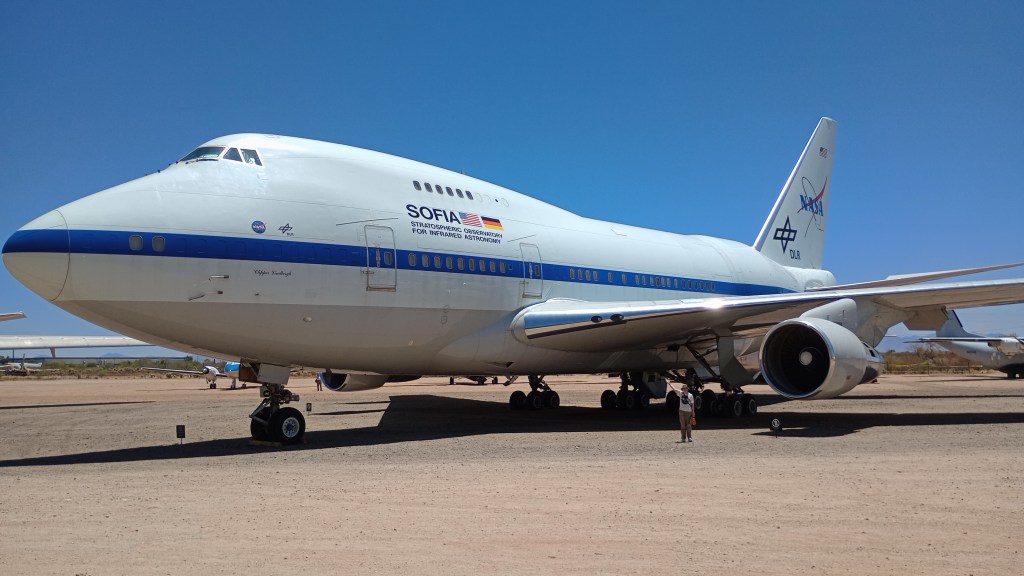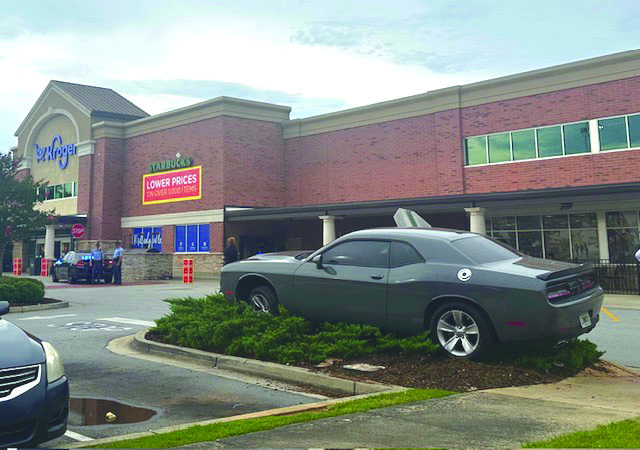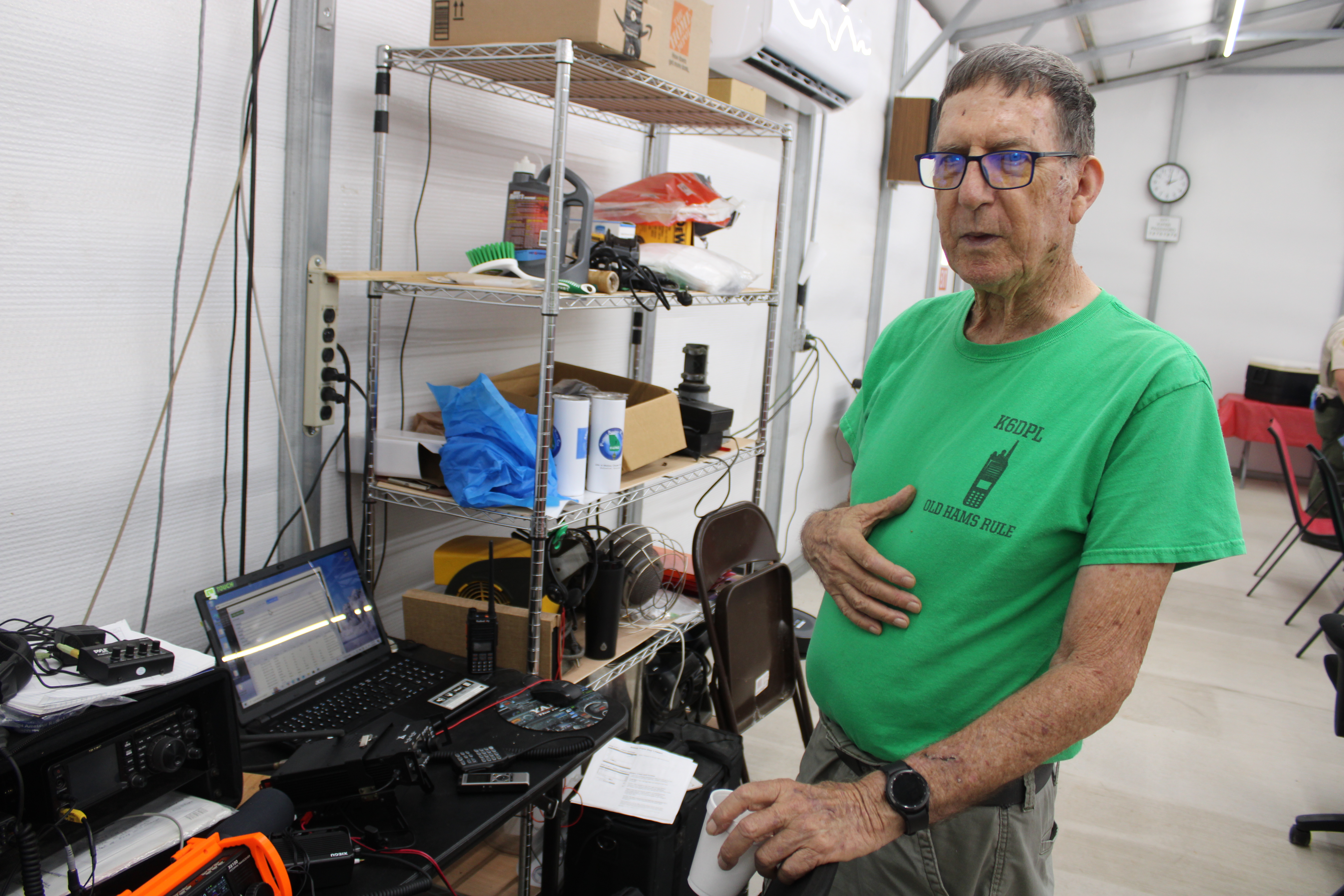OUR SPACE: SOFIA’s retirement home
Published 12:59 pm Tuesday, June 3, 2025

- The SOFIA mission aircraft is a modified Boeing 747SP, which carried an infrared telescope in a special compartment. The plane is now located at the Pima Air and Space Museum in Tucson, AZ. The telescope door is clearly visible near the tail fin. (Beate Czogalla)
If you’ve been reading Our Space for a little while, you will remember the SOFIA mission, and if you’re new to this column, here’s a short recap: SOFIA stands for Stratospheric Observatory for Infrared Astronomy. It was, simply put, a flying telescope. NASA acquired a Boeing 747SP — a long-range jumbo jet — and stripped the inside bare. The tail end of the plane was walled off and a large infrared telescope was installed there. The side of the plane slid up like a giant garage door, exposing the telescope to the very thin air around 45,000 feet up. The mission was a joint enterprise of the German space program DLR and NASA, and missions could be flown out of any airport with a runway that could accommodate a 747.
SOFIA was retired after eight years and hundreds of 10 hour long night flights in late 2022, and then it flew to its permanent retirement home at the Pima Air and Space Museum in Tucson Arizona.
I was fortunate enough to come face to face with astronomy’s most famous jumbo jet just last week on Memorial Day where I crossed off a major item on my bucket list. The museum, which is often referred to simply as The Pima is located on the southwestern edge of Tucson, between the International Airport and the so-called Boneyard — the world’s largest collection of airplanes that have been put into long-term storage. Some of them are used for spare parts, others might be pressed into service again, and a good number of them are classified military vessels, which is why you can’t tour this vast area any more.
Trending
The Pima itself is very much accessible. A well-curated collection of historic aircraft is housed in over five large hangars, and some of them really make you wonder how they were ever able to fly! Special exhibits cover various time periods and wars and themes such as aerial photography or the history of women pilots. There is a large number of spaceflight artifacts as well, such as training aircraft, space shuttle training modules and — get this — the Apollo command capsule simulator that was used to film scenes for the movie Apollo 13!
You can even creep yourself out by patting a nuclear bomb (of course it’s not armed!) or listen to recordings of aerial combat. You can marvel at the Blackbird supersonic plane that used to fly about three times the speed of sound at an altitude of 85,000 feet. Yes, you will need a pressure suit akin to a space suit for those kinds of flights.
One of the most impressive exhibits is found outside in the boiling desert heat — the so-called Super Guppy, a modified plane that looks a bit like a giant grain silo with wings. It was used to transport large rocket components and satellite; its most famous cargo was the Hubble Space Telescope, which hitched a ride to Kennedy Space Center, where it launched aboard a space shuttle.
But my main goal was to visit SOFIA.
If you know where to look you can see the giant tail fin of this plane from the road. It found its resting place behind hangars 3 and 4, and according to a museum worker it’s one of the facility’s most popular exhibits. As I approached in the blazing midday heat the sheer size of this aircraft became quite overwhelming, but ducking underneath it the shade it provided was very comfortable, especially with the breeze. It took quite some time to walk the perimeter of the airplane — it’s just about 200 by 200 feet in area and some 65 feet tall. The telescope door was closed, of course, but its track for the open position was clearly visible on the back.
As I stood there admiring the huge plane the wind hit the engines just right and the turbine blades began to spin — as if SOFIA remembered its many flights. It was unexpectedly emotional to witness this moment.
Trending
Stepping back you can see the NASA “meatball” logo on the tail fin and the mission insignia near the front end of the plane. It will eventually fade a little in the merciless desert sun, but the dry air will preserve the plane for a very long time. So if you ever find yourself in the Tucson area make an effort to go to the Pima Air and Space Museum and visit SOFIA. Tell it I said hi!
If a trip to Arizona is not in your future you can still learn about SOFIA and the many groundbreaking discoveries the telescope made by visiting https://science.nasa.gov/mission/sofia/ and following some of the many links for the science results, images and the organizations that made the mission happen.
—Beate Czogalla is the Professor of Theater Design in the Department of Theatre and Dance at Georgia College & State University. She has had a lifelong interest in space exploration and has been a Solar System Ambassador for the Jet Propulsion Laboratory/ NASA for many years. She can be reached at our_space2@yahoo.com .





